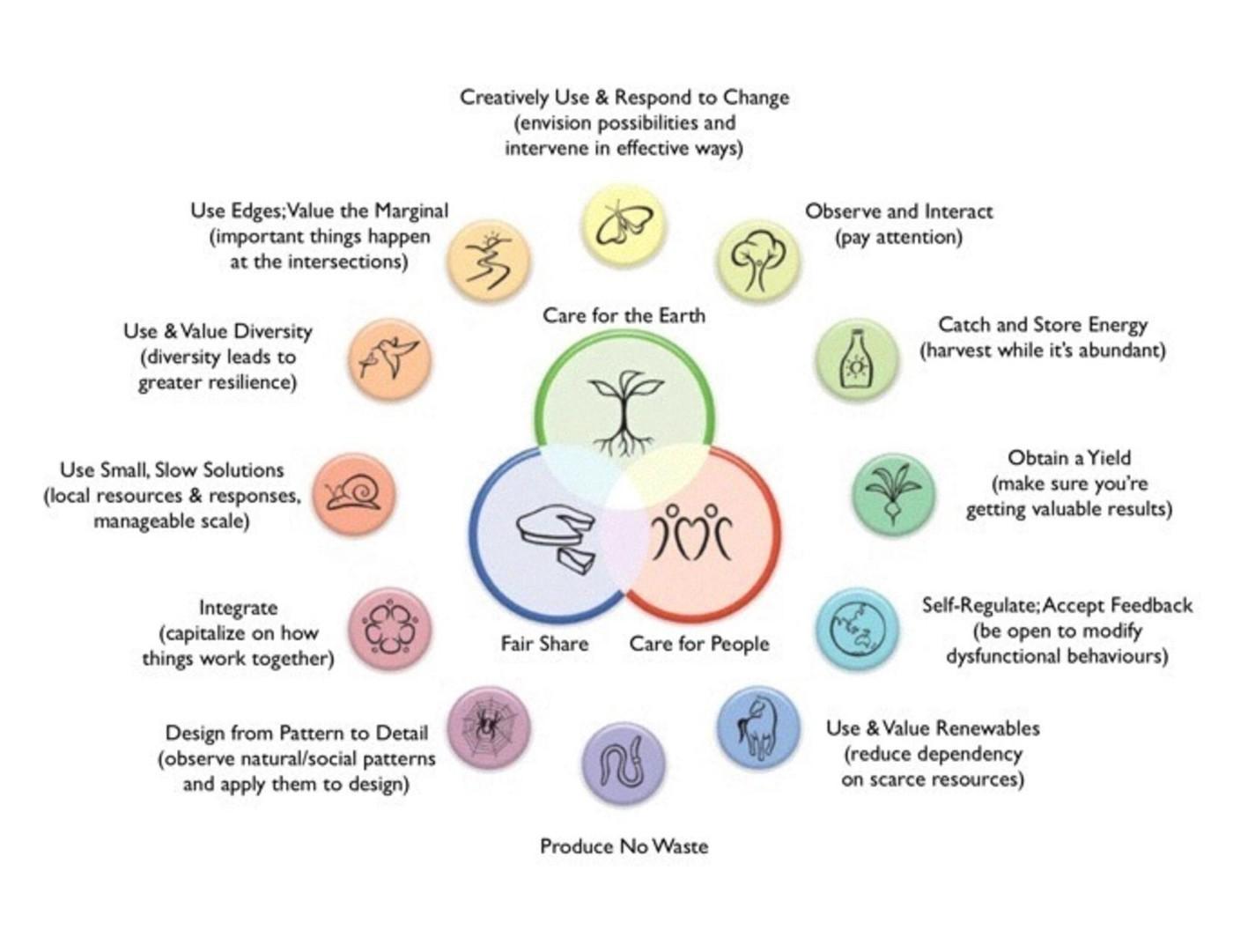What is permaculture?
It’s the conscious design and maintenance of agriculturally productive ecosystems which have the diversity, stability, and resilience of natural ecosystems. Gardening, by itself, is good for everyone and for the earth. But by taking a few hints from nature, there are ways you can make your garden work even harder and smarter than it already is.
Bill Mollison, one of the fathers of modern Permaculture or “permanent agriculture” said:
“Permaculture is a philosophy of working with, rather than against nature; of protracted and thoughtful observation rather than protracted and thoughtless labour; and of looking at plants and animals in all their functions, rather than treating any area as a single product system”.
For starters, think about your yard in zones. The zone closest to you–say, a kitchen garden-would be filled with plants that need the most attention from you. Next, you have to carefully consider the crops you plant, why you plant them, and how rotating them can benefit the soil. Luckily, you’re probably already practicing some principles of permaculture-but you can do more!
This graphic below outlines the 12 core principles of permaculture:

12 Permaculture Principles Explained
Permaculture literature often contains listed principles. Most of the principles have core similarities among various authors and experts. Listed below are twelve principles adapted from Dave Holmgren’s work. Holmgren’s list encompasses all essential elements of permaculture. At the bottom of the page you’ll also find Holmgren’s downloadable 30 page permaculture introduction PDF.
1. Observe and Interact
Design should consider different seasons, times of day, and cultures. Ways to work and design with existing patterns in nature should be considered.
2. Catch and Store Energy
Renewable ways of capturing and utilizing energy should be a priority. Energy, which gives us the ability to work, should never be wasted. True costs (i.e. negative externalities, human welfare, habitat protection, etc.) should be a central part of energy dialogue. Infrastructure improvements, retrofitting, passive design, and alternative storage techniques should be prioritized.
3. Obtain a Yield
Design should focus on principles of self-reliance. Producing an agricultural yield is necessary for independence and continuity. Yields are encouraging, and they create ‘positive feedback loops’.
4. Apply Self-Regulation and Accept Feedback
With better understanding of how positive and negative feedbacks work in nature, systems can be designed that are more self-regulating, thus reducing the work involved in repeated and harsh corrective management (Holmgren, 2007).
5. Use and Value Renewable Resources and Services
We live as a result of the ability of the living world to regenerate. A diversified use of renewable resources, at an appropriate level of use, can help us limit our consumption.
6. Produce No Waste
Look for ways to make waste a useful input in our system, rather than just an output. Recycling, composting, and reducing waste are increasingly important as population increases.
7. Design from Patterns to Details
By stepping back, we can observe patterns in nature and society. These can form the backbone of our designs, with the details filled in as we go (McManus, 2010). Thoughtful design is a way of addressing and solving many of our problems at the source.
8. Integrate Rather than Segregate
This requires the recognition of complex connections in nature, and making beneficial use of those interactions. We must brainstorm the many functions that each element can perform.
9. Use Small and Slow Solutions
Smaller systems are easier to maintain than big ones, making better use of local resources and producing more sustainable outcomes. Also, be sure to take adequate time through observation and seeking local knowledge in finding solutions.
10. Use and Value Diversity
Diversity fosters resilience. A society rooted in monoculture is vulnerable to unexpected change. Permaculture seeks to understand past, present, and potential biological and cultural diversity.
11. Use Edges and Value the Marginal
A point where two systems meet is often a place where productivity and stability can be found. Rather than disregarding the marginal, we should look for ways to make use of its diversity and productivity.
12. Creatively Use and Respond to Change
We can have a positive impact on inevitable change by carefully observing, and then intervening at the right time. We must not seek to take away the self determination of land in the process.
These are the basic rules. To dig deeper check out the permaculture PDF below.
Essence of Permaculture – By David Holmgren
This PDF contains the book Essence of Permaculture which was created as an accessible introduction to both the permaculture concept and the principles. Much of the first edition was extracted directly from David Holmgren’s 280 page bible: Permaculture: Principles and Pathways Beyond Sustainability.
Comment Below👇👇




GIPHY App Key not set. Please check settings